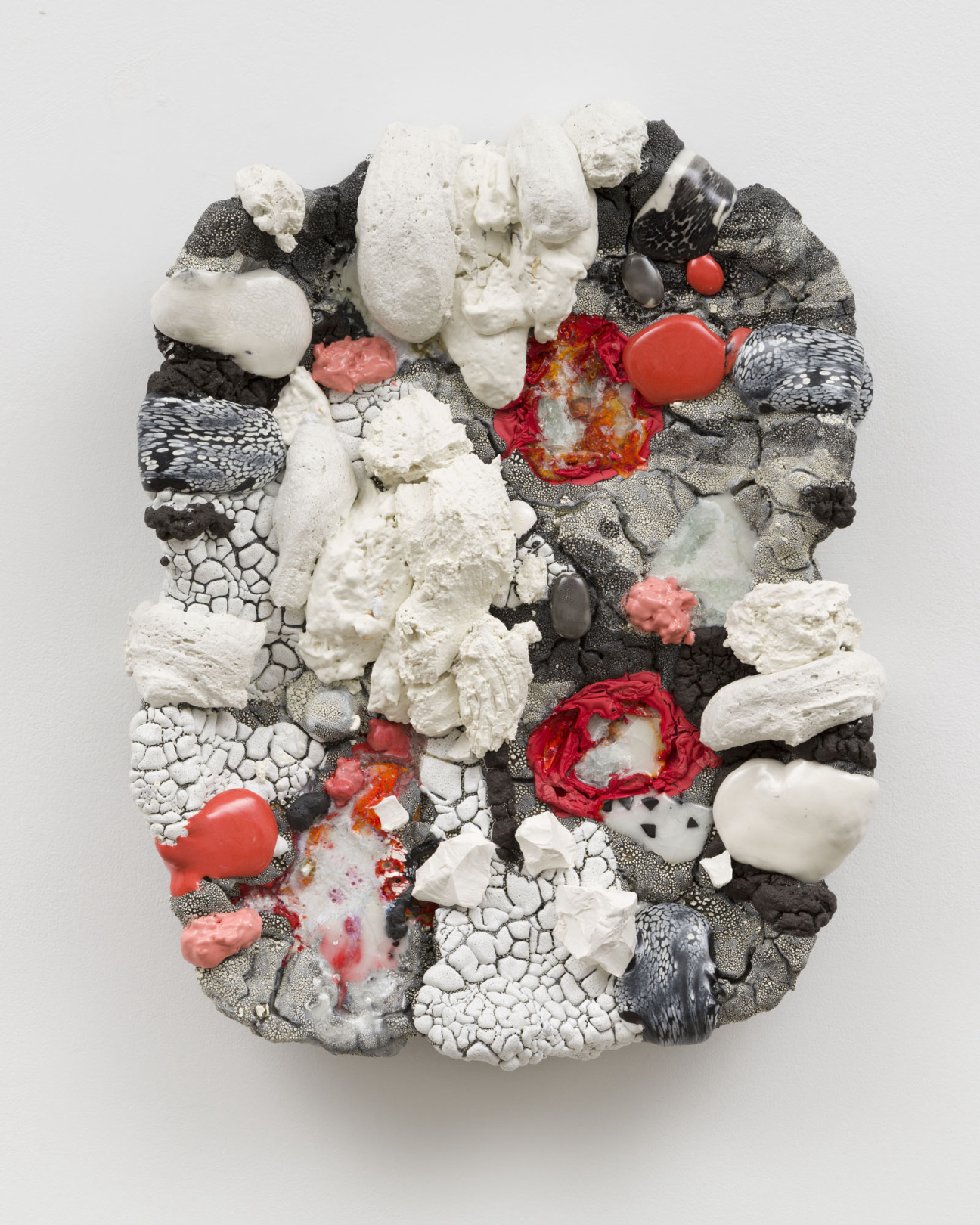
While in the Serengeti, Los Angeles-based ceramic artist Brian Rochefort watched two cheetahs as they stalked a zebra, killing the animal under the early morning sun. The experience inspired the title of his latest exhibition, “The Hunter” at New York’s Van Doren Waxter.
Sprawling wall-mounted works accompany the artist’s largest “Crater” sculptures thus far, layered formations that often look as if they were sectioned out of the jungle floor. Inspired largely by his far-reaching travels, the pieces speak to Rochefort’s desire to capture as much as he can of a rapidly changing environment. Here, he shares how the series came to fruition, and why it might finally be time to move on.
CULTURED: Can you tell us about the throughlines of these new pieces, or what brings the show together?
Brian Rochefort: The theme for the new works stretches the span of seven years when I started to travel, while developing new unique glazes. There are a total of three different bodies of work included in the show: the largest “Craters” I have made thus far, framed flat works which are studies for larger works, and classically shaped round vessels which are glazed with a similar technique.
CULTURED: Why did you want to scale up in size for these works?
Rochefort: Scaling up my works has been ongoing over the years. As I became more confident with building high volume glazes, the next logical step has been to build bigger. I have in the past made large sculptures but these are some of my largest, including one new flat work, my largest wall work to date.

CULTURED: How do your travels inform your practice? What, physically or intellectually, do you tend to bring home with you?
Rochefort: For years, I worked on small cylindrical works, which I still make. The large “Crater” sculptures began as a surprise idea after a hike to a massive crater on Isabella Island in the Galapagos. I became fascinated, so I started visiting remote areas in Belize, Ecuador, Tanzania, and most notably, the Bolivian Amazon, among many others.
Between each trip, I developed this new multidimensional form. The “Craters” started smaller in scale, about half of the size of my new works. Visiting dynamic cultures and making friends in different countries has been a reward that I hope others are able to experience.
CULTURED: What about the natural environment keeps drawing you back for inspiration?
Rochefort: One big reason was that once I began full time, I had time on my hands to explore. I do enjoy taking vacations from my studio for extended amounts to enjoy life. Whether it be with my dogs, family, or visiting other countries.

CULTURED: What do you think an artist’s role is in addressing political issues of the time, such as the climate crisis?
Rochefort: I am not actively a political artist in the sense of, for example, international diplomacy and American politics. Global warming should be addressed firmly. The reason why I thought it was important to visit these places was because, most likely, many of these will be inaccessible in my lifetime. I have seen up close and personal the devastation of the Amazon by mining and the strong winds that have destroyed parts of lodges I have visited. And the hunting of jaguars by foreign investors in the area.
CULTURED: Given the extensive process you take your pieces through, how much of a vision for the finished product do you have before starting?
Rochefort: Usually I build intuitively. When they are fired, I choose one color and begin airbrushing lines and gradients. From there, the process can appear random but is pretty calculated. With ceramics, there is always an element of surprise, which makes it exciting. I try to make each piece look different from the next, which is how I have developed this language.
CULTURED: With pieces that are layered upon, broken, and built back up, how do you know when a work is finished?
Rochefort: I used to work more experimentally but now, since I have developed glazes, I can sense what will happen and when it will be complete. I fire multiple times and build up the surface. Sometimes I can nail it quickly, other works can be a challenge.

CULTURED: How do you see this show building upon your existing body of work?
Rochefort: In the large, flat wall works, especially. I will continue to work on everything else, but it seems like this will be the next logical step. I think it’s important to shift direction at your own pace. I enjoy the new large wall piece at Van Doren Waxter which inspired the show. It is based on a memory I have while visiting the Serengeti. I witnessed two cheetahs track, hunt, and kill a zebra early one morning. It was an extraordinary experience to see firsthand.










 in your life?
in your life?

